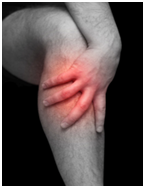Assignment:
Cardiovascular Case Study
You are a RN in the Emergency Room and have been assigned to Mr. Jones.
Subjective Report: Mr. Jones has been complaining of right calf pain and tenderness since around 0900. He describes the pain as tight, "like someone is squeezing it" and reports he noticed that his sock was tight around his right leg when getting dressed this morning. He states that he came thru this exact ER three weeks ago when he was having heart trouble and needed surgery. He is currently on a maintenance dose of Coumadin for "irregular heartbeats" which had been diagnosed as intermittent atrial fibrillation 3 weeks ago, after mitral valve surgery. Mr. Jones says, "They warned me that if I didn't take the Coumadin that I would be at risk for clots. I've been taking my medication exactly as prescribed, how could this happen?" He also asks that his "iron level" be checked because it was really low after surgery. He says that he has been eating spinach at "nearly every meal" to improve his "iron." Upon additional inquiry regarding his diet, you find out that he consumes one glass of grapefruit juice daily and is also taking garlic pills for his cholesterol. He says, "My wife wants me to be healthy so she's making me take all kinds of herbal medications."
Assessment: Mr. Jones' right leg is edematous; his calf is reddened, warm, and tender to touch. His vital signs are: T: 36.8 P: 98 and irregular R: 24 BP: 118/66.

Research and discuss the following areas (including a pathophysiologic explanation):
• What is the relationship between his atrial fibrillation and clot? What are the risks from this?
• Why are certain medications contraindicated with Coumadin and why? (Specifically ASA).
• What is the concern regarding Joe's dietary consumption of spinach (Vitamin K) and herbal supplements?
• What is the difference between how anticoagulant, antiplatelet and thrombolytic medications work?
• What is the reversal agent if a patient receives too much heparin (or too much Coumadin) and how do they work?